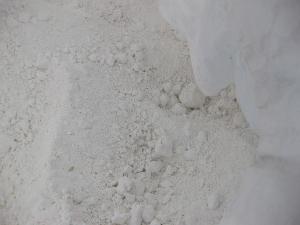Cement brand M500 today is one of the most popular and indispensable types of building materials. This great popularity is explained by the presence of strength characteristics - it is able to withstand loads exceeding 500 kg / cm 2 .
Cement M500: technical specifications
This material is a finely ground mineral powder with a gray-green color. It contains a large percentage of calcium silicates. Concrete and mortar, which includes this component, are able to give building structures special strength.
General characteristics
Cement M500, the price of which is relatively low, is produced according to GOST 10178-85.
For its production, the following raw materials are used:
- Gypsum stone.
- Clinker. This is a mineral obtained by sintering limestone and clay.
- Blast furnace charge.
- Various active additives that are used to improve the properties of cement. They can be hydrophobic, plasticizing, acid resistant.
All components are finely ground and mixed in a specific proportion. An index of 500 in the cement label indicates that the material is capable of supporting a weight of 500 kg per 1 centimeter square. Solutions made on the basis of this brand are quite resistant to low temperature, and when hardening, its shrinkage is negligible, which significantly reduces the risk of cracks in the body of the structure.
Cement M500 specifications has the following:
- Frost resistance - F70. This is a very important parameter. The ability of the M500 cement to withstand repeated freezing-thawing is formed by the addition of various modifying additives to its composition.
- Bending strength 6.4 MPa.
- The setting period is approximately 50 minutes.
- The compressive strength is 59.9 MPa.
- Setting expansion - 10 mm.
- The fineness of grinding is 92%. This characteristic can have a direct effect on the setting time and hardening of the solution, as well as its strength.
- The radioactivity is 370 Bq / kg.
- Cement M500 specifications has the most positive. Concrete and mortars based on cement 500 are highly resistant to corrosion and aggressive environment. Such mixtures are recommended for use in winter concreting. Cement M500 proportions when used in household construction are as follows: 1: 3: 6, where there is 1 part of cement, 3 sand and 6 aggregate . It should be remembered that M500 cement cannot be mixed with other brands, since the characteristics of this material will change dramatically for the worse.

Cement Density M500
The density of cement is the ratio of the mass of material to volume. It is true and bulk. According to technical data, density is a private measurement of the mass of grains of a given substance to its volume (pores and air voids are not taken into account).
Cement M500 has the following technical specifications for density: depending on what area the surface occupies, it is approximately 3000/3200 kg / m3.
The bulk density of the material in a loose state is 1100/1200 kg / m 3 .
In the compacted is 1500/1600 kg \ m 3 .
At large facilities, in the calculations, the density of M500 cement is mainly taken as an average - 1300 kg / m 3 .
Additives
When performing construction work, 2 types of cement M500 are used:
- No mineral additives. The pure product is labeled D0 (which means zero percent).
- With the content of mineral additives. Cement with different additives is indicated by the indices D5 - D20. The letter "D" means additives, the numbers indicate the percentage of additives.
Additives
They are designated by letters that appear at the end of the names. The most common ones are:
- PC - Portland cement.
- B is a quick-hardening cement. It is used in emergency situations.
- ShPC - slag Portland cement. The added letter “” means that the threshold of additives exceeds 20%.
- N - manufacture includes a strictly dosed amount of clinker.
- PL - due to the introduction of plasticizers, frost resistance and elasticity of the material are increased.
- GF is a hydrophobic brand that is waterproof.
- SS is sulfate resistant. Resistant to aggressive fluids and substances.
- VRTS - waterproof and quick-setting. It is used to seal joints, joints, cracks.
Due to the introduction of active additives into the composition of cement, its properties change or strengthen. This technology makes it possible to obtain a concrete mix that meets the specific requirements of customers at minimal cost. The addition of additives also allows for significant cement savings.
Cement M500 - application
Based on this material, high-quality building mixtures are made, such as heavy concrete, masonry and plaster. A distinctive feature of finished designs is strength, stability, durability. Cement is widely used on the most critical building sites:
- For pouring the foundation for multi-story and industrial buildings.
- For the construction of public and industrial buildings and premises that are experiencing increased load (for example, shopping centers, train stations, large warehouses or port docks).
- For emergency repairs and restoration of reinforced concrete and concrete structures. Characteristics of the material allow you to perform work in the shortest period of time and with proper quality.
- For the construction of hydraulic structures, such as dams, bridges, dams, locks.
- Used in the construction of expressways and roads, etc.
Now M500 cement, the price of which depends on the volume (wholesale or retail) and starts at more than 200 rubles per bag (50 kg), has increasingly been used for the manufacture of eurofences, paving slabs, gas silicate blocks.